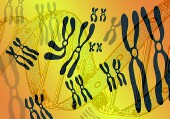
MONDAY, Aug. 13 (HealthDay News) — Scientists have identified 10 new regions of DNA linked to type 2 diabetes, bringing the total number of genes and gene regions associated with the disease to more than 60.
Type 2 diabetes occurs when the body does not produce enough insulin and does not respond effectively to the insulin it does produce. As a result, glucose levels in the blood can increase unchecked. Uncontrolled diabetes can lead to a number of health complications, including heart disease, stroke, nerve damage and blindness.
The international team of researchers said their findings may help experts develop treatments for the condition.
“The 10 gene regions we have shown to be associated with type 2 diabetes are taking us nearer a biological understanding of the disease,” said the study’s principal investigator Mark McCarthy of the Wellcome Trust Centre for Human Genetics at the University of Oxford, in a university news release. “It is hard to come up with new drugs for diabetes without first having an understanding of which biological processes in the body to target. This work is taking us closer to that goal.”
The study, led by researchers from the University of Oxford, the Broad Institute of Harvard and MIT, and the University of Michigan, investigated common genetic variations in DNA that may be linked to type 2 diabetes.
The investigators examined the DNA of nearly 35,000 people with type 2 diabetes and roughly 115,000 people without the disease and found the new gene regions where DNA changes could be linked to people’s risk for diabetes. Two of these regions showed different effects depending on gender. One was associated with greater risk for the disease in men, while the other was linked to increased risk in women.
A pattern in the type of genes linked to type 2 diabetes also emerged from the study.
“By looking at all 60 or so gene regions together we can look for signatures of the type of genes that influence the risk of type 2 diabetes,” McCarthy said. “We see genes involved in controlling the process of cell growth, division and aging, particularly those that are active in the pancreas where insulin is produced. We see genes involved in pathways through which the body’s fat cells can influence biological processes elsewhere in the body. And we see a set of transcription factor genes — genes that help control what other genes are active.”
The study authors said they are continuing their investigation of the genetic changes behind type 2 diabetes by fully sequencing patients’ DNA.
“Not only will we be able to look for signals we’ve so far missed, but we will also be able to pinpoint which individual DNA change is responsible,” McCarthy said. “These genome sequencing studies will really help us push forward towards a more complete biological understanding of diabetes.”
The study was published online Aug. 12 in Nature Genetics.
More information
The American Diabetes Association has more about the genetics of diabetes.

